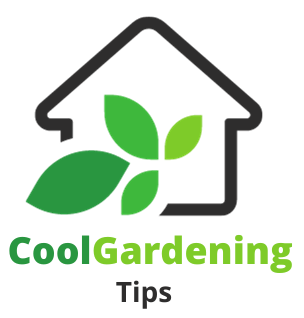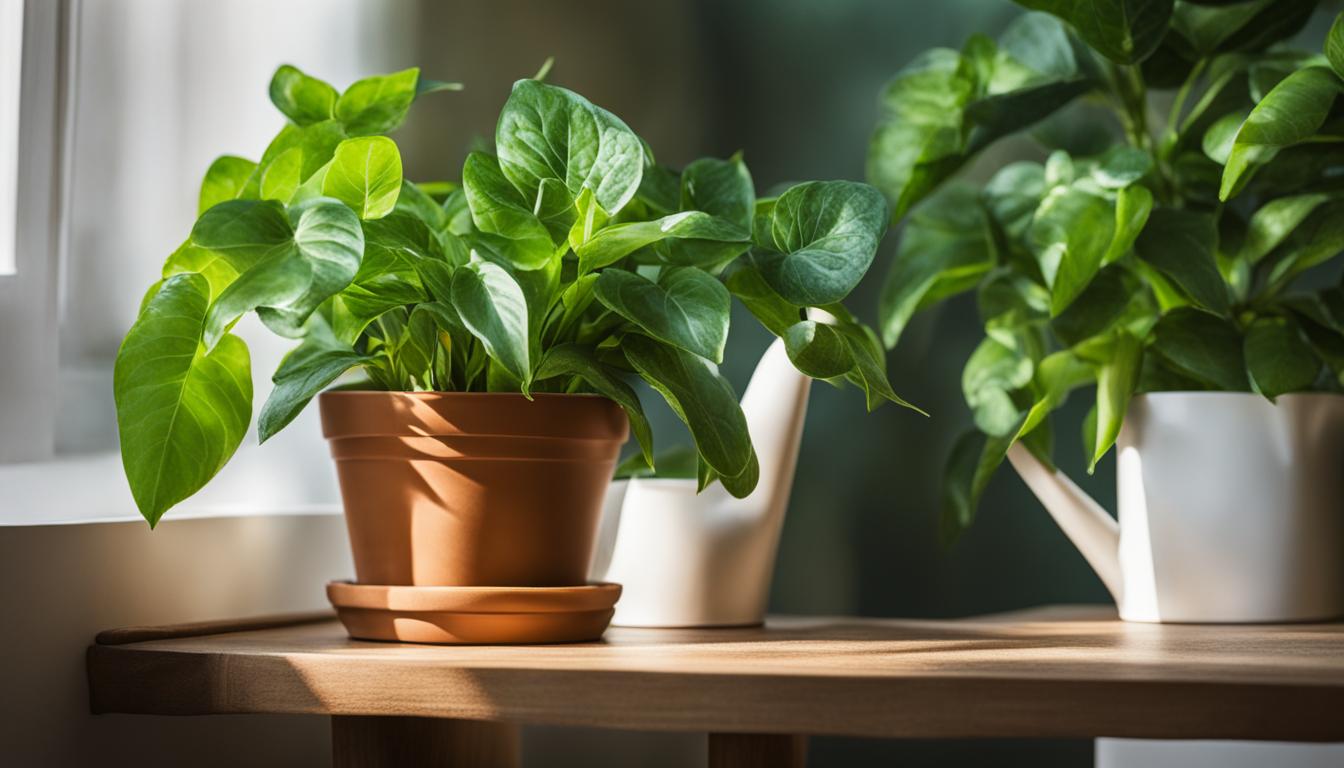Welcome to my comprehensive guide on indoor plant care for beginners. Whether you are a plant enthusiast or just starting your journey into the world of indoor gardening, this guide will equip you with the knowledge you need to keep your plants healthy and vibrant.
Indoor plants not only add beauty to our homes and workplaces but also provide a sense of tranquility and freshness. They can improve air quality, boost mood and productivity, and create a calming atmosphere. However, caring for indoor plants requires proper attention and knowledge. That’s where this guide comes in handy.
Throughout this guide, you will discover essential tools and supplies for indoor plant care, learn about watering techniques, understand the importance of choosing the right soil, and explore the significance of providing adequate light and temperature. Additionally, I will delve into topics such as fertilizing, pruning, dealing with common pests and diseases, propagating, repotting, and seasonal care for your indoor plants.
So, if you are ready to become an expert in indoor plant care, let’s delve into the world of greenery and unlock the secrets to nurturing beautiful and thriving indoor plants. By the end of this guide, you will have all the knowledge and confidence you need to create your own indoor oasis.
Why Indoor Plants Are Beneficial for Your Home
Indoor plants have become increasingly popular in recent years, and for good reason. Not only do they bring a touch of nature into our homes, but they also offer a range of benefits that can enhance our well-being and living spaces. Let’s explore some of the advantages of having indoor plants in your home.
Improved Air Quality
One of the significant benefits of indoor plants is their ability to purify the air. Through a process called photosynthesis, plants absorb carbon dioxide and release oxygen, improving the air quality in our homes. Additionally, certain houseplants, such as spider plants and peace lilies, can remove harmful pollutants like formaldehyde and benzene from the air, making the environment healthier for us to breathe.
Mood Enhancement and Stress Reduction
Indoor plants have been shown to have a positive impact on our mental well-being. The presence of greenery indoors can reduce stress levels, improve mood, and increase feelings of calmness and relaxation. Studies have found that simply being around plants can lead to lower blood pressure and heart rate, as well as reduced feelings of anxiety and depression. Incorporating indoor plants into your home can create a soothing and tranquil atmosphere.
Natural Aesthetics and Improved Productivity
Indoor plants add a touch of natural beauty to our living spaces, making them visually appealing and inviting. Their vibrant colors and unique foliage patterns can enhance the overall aesthetics of a room, creating a more pleasant and welcoming environment. Moreover, numerous studies have shown that having plants in the workplace can increase productivity, creativity, and concentration levels. Whether in your home or office, indoor plants can create a more visually stimulating and productive atmosphere.
Essential Tools and Supplies for Indoor Plant Care
When it comes to caring for your indoor plants, having the right tools and supplies is essential. These items will not only make your plant care routine easier but also help ensure the health and growth of your plants. Here are some must-have tools and supplies for indoor plant care:
Gardening Gloves
Protecting your hands is important while handling plants. Investing in a pair of gardening gloves will not only keep your hands clean but also prevent any potential skin irritation from plant sap or thorns.
Watering Cans and Spray Bottles
Watering cans and spray bottles are essential for providing adequate hydration to your indoor plants. A watering can with a long spout allows for precise and controlled watering, while a spray bottle is useful for misting plants that require high humidity.
Potting Mix
The right potting mix is crucial for healthy plant growth. Look for a well-draining mix that is suitable for your specific plants. A good potting mix consists of a balanced combination of organic matter, such as peat moss or coconut coir, and other additives like perlite or vermiculite for improved drainage.
Fertilizers
Indoor plants typically require regular fertilization to ensure they receive essential nutrients. Choose a fertilizer specifically formulated for houseplants and follow the instructions for application. Organic options like compost or worm castings are also beneficial for plant health.
Pruning Shears
Pruning shears are necessary for trimming and shaping your indoor plants. They allow you to remove dead or damaged leaves, promote bushier growth, and maintain the overall appearance of your plants. Ensure your pruning shears are sharp and clean to prevent any damage or disease spread.
Plant Stands
Plant stands not only elevate your indoor plants but also add visual interest to your space. They help create a focal point and allow for better light exposure, especially for taller plants. Choose plant stands that are sturdy, durable, and aesthetically pleasing to enhance the overall look of your indoor garden.
Having these essential tools and supplies on hand will set you up for success in indoor plant care. By equipping yourself with the right equipment, you’ll be able to provide the necessary care and attention that your plants need to thrive. Remember to always follow the specific care instructions for each plant species and monitor their growth to ensure optimal health.
Understanding the Basics of Watering Indoor Plants
Proper watering is crucial for the health and vitality of indoor plants. Finding the right balance can be a challenge, but with the right knowledge and careful observation, you can ensure your plants get the hydration they need. Here are some essential tips and guidelines to help you water your indoor plants effectively:
1. Know your plant’s watering needs
Every indoor plant has different water requirements, so it’s crucial to understand the specific needs of each species. Some plants prefer to dry out between waterings, while others need consistently moist soil. Research the optimal watering habits for your plants and create a watering schedule accordingly.
2. Check the soil moisture
Before watering your plants, always check the soil moisture to determine if watering is necessary. Insert your finger about an inch deep into the soil—if it feels dry, it’s time to water. If the soil feels damp, wait a few more days before watering to avoid overwatering. Remember, overwatering can lead to root rot and other issues.
3. Water thoroughly but avoid waterlogged soil
When it’s time to water your indoor plants, make sure to do it thoroughly. Water until it runs out of the drainage holes, ensuring the entire root ball is hydrated. However, never let your plants sit in standing water, as this can drown the roots. Always empty the excess water from the saucer or tray beneath the pot.
4. Consider environmental factors
Several environmental factors can affect your indoor plant’s watering needs. Temperature, humidity levels, and the amount of light your plants receive can all impact how quickly the soil dries out. For example, plants in brightly lit areas may require more frequent watering than those in low-light conditions. Monitor these factors and adjust your watering routine accordingly.
Remember, the key to successful watering is observation and consistency. By understanding your plants’ individual needs and paying attention to environmental factors, you can keep your indoor plants healthy and thriving.
| Plant | Watering Frequency |
|---|---|
| Snake Plant (Sansevieria) | Water every 2-3 weeks |
| Peace Lily (Spathiphyllum) | Water when the top inch of soil is dry |
| Fiddle Leaf Fig (Ficus lyrata) | Water when the top inch of soil is dry |
| Pothos (Epipremnum aureum) | Water when the top inch of soil is dry |
Remember to adjust the watering frequency based on the specific conditions in your home and the needs of your plants. With time and experience, you’ll become more attuned to the watering requirements of your indoor plants, promoting their overall health and longevity.
“Proper watering is the foundation of successful indoor plant care. By understanding your plant’s needs and providing adequate hydration, you can create a thriving indoor garden.” – Me
Choosing the Right Soil for Indoor Plants
When it comes to caring for indoor plants, choosing the right soil is crucial for their overall health and growth. The soil you select should provide adequate drainage while also offering the necessary nutrients for the plants to thrive.
An ideal potting mix for indoor plants is a soil-less mix that consists of peat moss, vermiculite or perlite, and compost. This combination creates a well-draining environment that prevents waterlogged roots, which can lead to root rot. The peat moss retains moisture while the vermiculite or perlite promotes proper aeration. Compost enriches the soil with organic matter and essential nutrients, ensuring optimal plant growth.
Some indoor plants may have specific soil requirements depending on their natural habitat. For example, succulents and cacti prefer a well-draining soil mix that replicates their native arid conditions. On the other hand, tropical plants may thrive in a soil mix that retains more moisture.
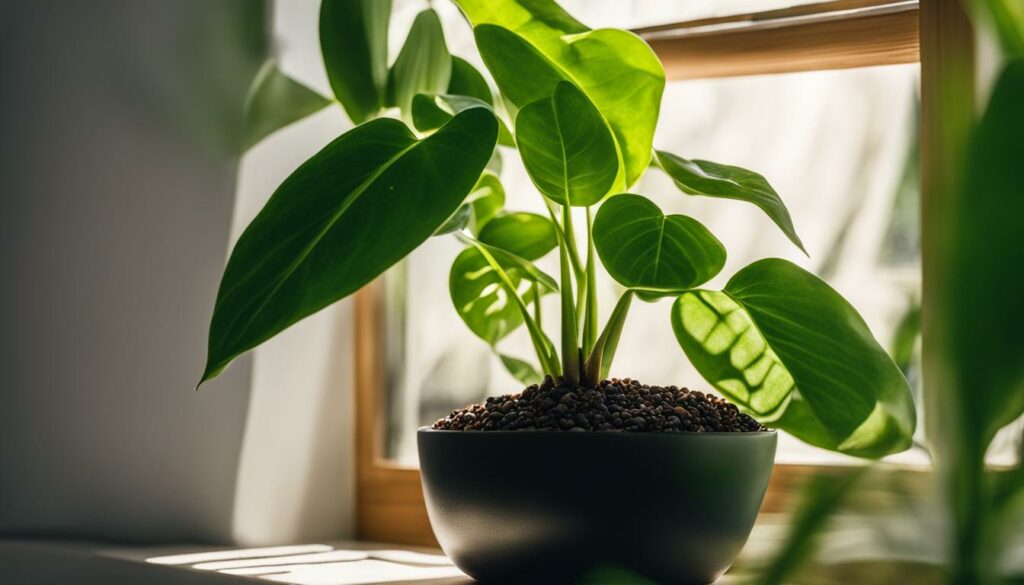
Table: Comparison of Different Soil Types
| Soil Type | Drainage | Nutrient Retention | Plant Examples |
|---|---|---|---|
| Fertilized potting soil | Fair | High | Most common houseplants |
| Succulent/cacti mix | Excellent | Low | Succulents, cacti |
| Orchid bark mix | Good | Moderate | Orchids |
| Peat moss-based mix | Good | High | Tropical plants, ferns |
It is important to note that using garden soil from your outdoor garden is not recommended for indoor plants. Garden soil is heavy, compacted, and may contain pests or diseases that can harm your indoor plants. Additionally, it may not provide the proper drainage and aeration necessary for healthy root growth.
Remember to repot your indoor plants every 1-2 years, using fresh potting mix to replenish nutrients and ensure adequate drainage. Monitoring your plants for signs of overwatering or underwatering, such as wilting or yellowing leaves, will help you adjust your watering and soil maintenance practices accordingly.
Providing Adequate Light for Indoor Plants
When it comes to indoor plants, providing the right amount of light is essential for their growth and overall health. Different plants have varying light requirements, so it’s important to understand their individual needs to ensure they thrive in your home or office environment.
Most indoor plants fall into one of three categories based on their light preferences: high light, medium light, or low light. High-light plants, such as succulents and cacti, require direct sunlight for several hours each day. Medium-light plants, like pothos and dracaena, can tolerate indirect sunlight or filtered light. Low-light plants, such as snake plants and peace lilies, thrive in areas with minimal natural light or even fluorescent lighting.
When choosing the right lighting for your indoor plants, consider the direction and intensity of natural sunlight in your space. South-facing windows receive the most intense light, while north-facing windows receive the least. East-facing windows provide bright morning light, while west-facing windows offer warm afternoon light. If your space lacks natural light, you can supplement it with artificial grow lights specifically designed for plants.
Remember to rotate your plants periodically to ensure even light distribution and prevent one side from growing more than the other. Monitor your plants closely for signs of light stress, such as yellowing leaves or stunted growth. Adjust the placement of your plants accordingly to provide optimal lighting and maintain their overall well-being.
Fertilizing Indoor Plants for Optimal Growth
Proper fertilization is essential for the optimal growth and health of indoor plants. Fertilizers provide essential nutrients that may be lacking in the potting mix, ensuring that your plants have everything they need to thrive. However, it’s important to use the right fertilizer and apply it correctly to avoid over-fertilization, which can be harmful to your plants.
When selecting a fertilizer for your houseplants, consider the specific needs of each plant species. Some plants may require a balanced fertilizer, while others may prefer a formulation with higher nitrogen, phosphorus, or potassium content. It’s a good idea to choose a slow-release fertilizer that provides a steady supply of nutrients over time.
To fertilize indoor plants, follow the instructions on the fertilizer packaging. Generally, it’s recommended to dilute the fertilizer in water according to the manufacturer’s recommendations. Apply the diluted fertilizer to the soil around the base of the plant, avoiding direct contact with the leaves or stems. Be careful not to over-fertilize, as this can lead to salt build-up in the soil, causing root burn or other issues.
Table: Common Fertilizers for Indoor Plants
| Fertilizer | Nutrient Content | Recommended Plants |
|---|---|---|
| 10-10-10 | Equal parts nitrogen (N), phosphorus (P), and potassium (K) | Most houseplants |
| 10-5-5 | Higher nitrogen (N) content | Foliage plants |
| 5-10-10 | Higher phosphorus (P) content | Flowering plants |
“Fertilizing your indoor plants regularly can make a significant difference in their growth and overall appearance. It provides them with the necessary nutrients they may not receive from the potting mix alone. Just remember to choose the right fertilizer for each plant, follow the instructions carefully, and avoid overdoing it.”
In addition to regular fertilization, it’s important to monitor your plants closely for any signs of nutrient deficiencies or excesses. Yellowing leaves, stunted growth, and poor flowering can be indicators of nutrient imbalances. Adjusting the fertilization program based on the specific needs of your plants can help address these issues and promote healthy growth.
Remember that fertilization should be part of a comprehensive plant care routine that includes proper watering, adequate light, and appropriate grooming. By providing your indoor plants with the right balance of nutrients and care, you’ll enjoy vibrant, thriving plants that enhance the beauty of your space.

Maintaining the Right Temperature and Humidity Levels
When it comes to indoor plant care, maintaining the right temperature and humidity levels is crucial for the well-being and growth of your plants. Each plant has its own specific temperature and humidity requirements, so it’s important to create an optimal climate for them to thrive.
For temperature, most indoor plants prefer a range between 65°F and 75°F (18°C to 24°C). However, some plants may tolerate slightly cooler or warmer temperatures, so it’s essential to research the specific needs of your plants. Avoid placing your plants near drafts, heating vents, or air conditioning units, as extreme temperature fluctuations can stress the plants.
Humidity is another critical factor to consider. The humidity levels in our homes are typically lower than what many tropical plants prefer. To increase humidity, you can place a tray of water near your plants, use a humidifier, or mist the foliage regularly. However, be cautious not to over-mist, as excessive moisture can lead to fungal diseases.
Table: Ideal Temperature and Humidity Ranges for Common Indoor Plants
| Plant Name | Ideal Temperature Range (°F) | Ideal Humidity Range (%) |
|---|---|---|
| Peace Lily | 65-75 | 40-60 |
| Snake Plant | 55-85 | 40-70 |
| Philodendron | 60-80 | 40-60 |
| Ferns | 60-75 | 50-70 |
“Maintaining the right temperature and humidity levels is crucial for indoor plants to thrive and grow. Proper climate conditions create an environment that mimics their natural habitat and ensures their well-being.”
By monitoring and adjusting the temperature and humidity levels, you can provide your indoor plants with the optimal conditions for their growth. Remember to regularly check their specific requirements, adapt to changing seasons, and observe any signs of distress or wilting. With the right climate, your indoor plants will flourish and bring beauty and freshness to your living space.
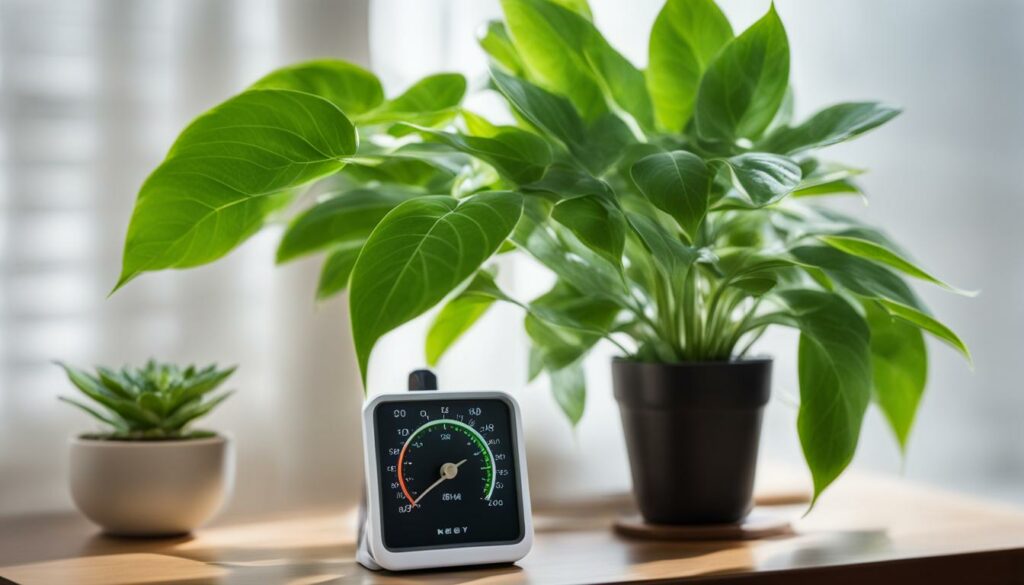
Pruning and Grooming Indoor Plants
Pruning and grooming are essential tasks for maintaining the health and appearance of your indoor plants. Regular pruning helps control the growth of your plants, shaping them into more desirable forms and preventing them from becoming too leggy or unruly. Grooming, on the other hand, involves removing dust, debris, and dead leaves from your plants, keeping them clean and vibrant.
When it comes to pruning, start by inspecting your plants for any damaged or diseased parts. Use clean, sharp pruning shears to carefully remove these areas, making clean cuts just above a node or leaf joint. Additionally, you can prune to shape your plants, removing any unwanted branches or stems. Remember to always use clean tools to prevent the spread of diseases.
Grooming your indoor plants is a simple yet effective way to enhance their appearance and overall health. Gently wipe or rinse off dust from the leaves using a soft cloth or a gentle spray of water. This will not only remove the accumulated dust but also improve the plants’ ability to absorb light and carry out photosynthesis.

Benefits of Pruning and Grooming Indoor Plants
Pruning and grooming your indoor plants offer several benefits. Regular pruning helps promote bushier and more compact growth, making your plants look fuller and more attractive. It also improves air circulation around the plant, reducing the risk of diseases caused by excess moisture. Grooming, on the other hand, keeps your plants clean and free from dust, ensuring optimal light absorption for photosynthesis.
Moreover, pruning and grooming offer an opportunity to closely inspect your plants for any signs of pests or diseases. By regularly checking your plants during the pruning and grooming process, you can detect and address any issues before they become severe.
Dealing with Common Pests and Diseases in Indoor Plants
Indoor plants are not immune to pests and diseases, and it is important to address these issues promptly to ensure the health and vitality of your plants. Common pests that can affect indoor plants include aphids, spider mites, and fungus gnats. These pests can cause damage to the leaves, stems, and roots of your plants, leading to stunted growth and even death if left untreated.
Effective pest control for houseplants involves a combination of preventive measures and targeted treatments. Regularly inspect your plants for any signs of pests, such as tiny insects, webbing, or yellowing leaves. If you notice an infestation, isolate the affected plant to prevent the pests from spreading to other plants.
There are various methods for controlling indoor plant pests. Natural remedies like neem oil, insecticidal soaps, and homemade sprays can be effective against certain pests. For severe infestations, you may need to resort to chemical insecticides. Always follow the instructions on the product label and take precautions to protect yourself and the environment when using these treatments.
Common Plant Diseases
Aside from pests, indoor plants can also be susceptible to diseases. Common plant diseases that can affect your indoor garden include powdery mildew, leaf spots, and root rot. These diseases are often caused by fungal or bacterial pathogens, and they can weaken your plants and compromise their overall health.
Preventing the occurrence of plant diseases is key to maintaining the well-being of your indoor plants. Proper watering practices, adequate air circulation, and avoiding over-fertilization can help minimize the risk of disease. If you do encounter a diseased plant, remove and dispose of the affected parts to prevent the spread of the disease to other plants.
Taking Steps for Pest and Disease Control
Implementing good plant care practices is essential for preventing and managing pests and diseases in your indoor plants. Here are some tips to help you maintain a healthy and pest-free indoor garden:
- Regularly inspect your plants for signs of pests or diseases.
- Isolate any infested or diseased plants to prevent spreading.
- Use natural remedies or chemical treatments as necessary, following the instructions carefully.
- Practice good hygiene by cleaning and disinfecting your gardening tools regularly.
- Ensure proper air circulation and avoid overwatering to prevent the development of fungal diseases.
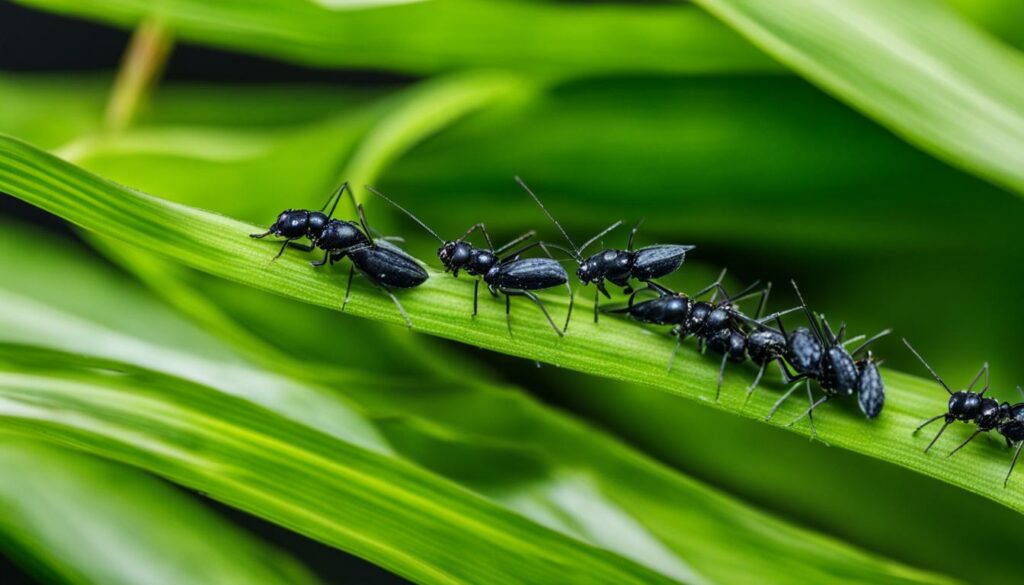
Propagating Indoor Plants
Propagating indoor plants is a wonderful way to expand your plant collection and create new plants from existing ones. By using various propagation methods, you can reproduce your favorite houseplants and share them with friends or use them to fill different areas of your home. Let’s explore some common techniques for propagating indoor plants.
1. Division
Division is a propagation method primarily used for plants with clumping or spreading growth habits, such as snake plants, peace lilies, or spider plants. To propagate using division, carefully remove the plant from its pot and gently separate the root ball into two or more sections. Ensure that each section has a healthy root system and a few stems or leaves. Plant the divided sections into their own pots, using well-draining soil, and provide them with the appropriate care.
2. Stem Cuttings
Stem cuttings are one of the most popular and effective ways to propagate a wide range of indoor plants, including pothos, philodendrons, and ficus. To take stem cuttings, select a healthy branch or stem and make a clean cut just below a node (where leaves emerge). Remove any lower leaves to expose a few inches of bare stem. Place the cutting in a glass of water or directly into a pot filled with moistened potting mix. Keep the cutting in a warm and humid environment, ensuring the soil remains consistently moist. Roots should form within a few weeks, indicating successful propagation.
3. Leaf Cuttings
Leaf cuttings are a popular method for propagating succulents, such as jade plants or echeverias. To propagate using leaf cuttings, gently twist or cut off a healthy leaf from the parent plant. Allow the leaf to dry and callus for a day or two, then place it on top of moistened potting mix. Lightly press the cut end of the leaf into the soil, ensuring good contact. Mist the leaf occasionally to maintain humidity, but avoid overwatering. After a few weeks, small plantlets should emerge from the base of the leaf, indicating successful root formation.
Experimenting with different propagation methods can be a fun and rewarding experience. Remember to be patient and provide the proper care and conditions for your propagated plants to ensure their success. With a bit of practice and knowledge, you can become proficient in propagating indoor plants and enjoy the satisfaction of watching your plant collection grow.
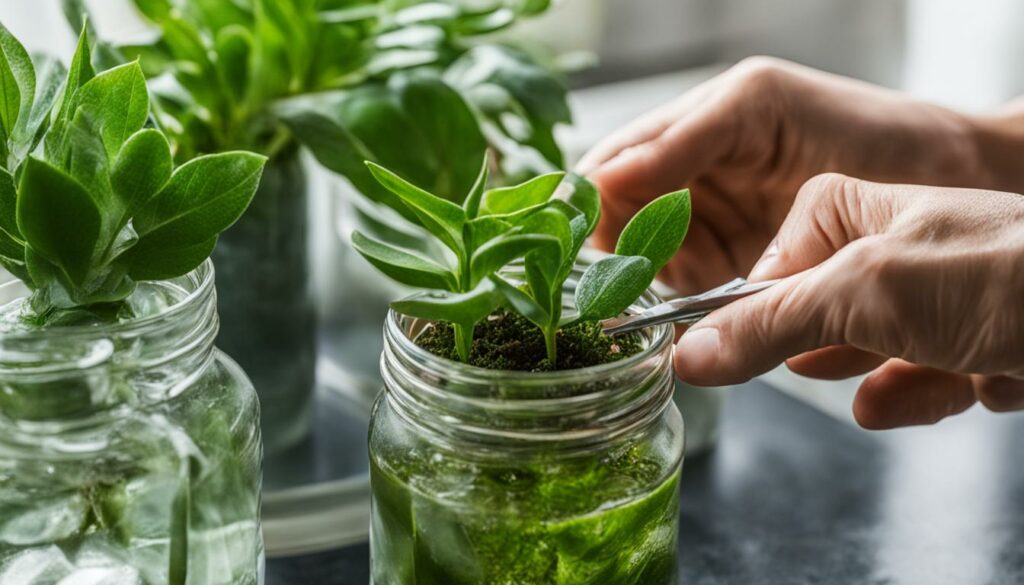
Repotting Indoor Plants
Repotting is an essential aspect of indoor plant care, ensuring the continued growth and health of your plants. As plants grow, their roots outgrow the current pot, leading to rootbound conditions. Repotting provides fresh soil and ample space for the roots to expand, promoting optimal growth and development.
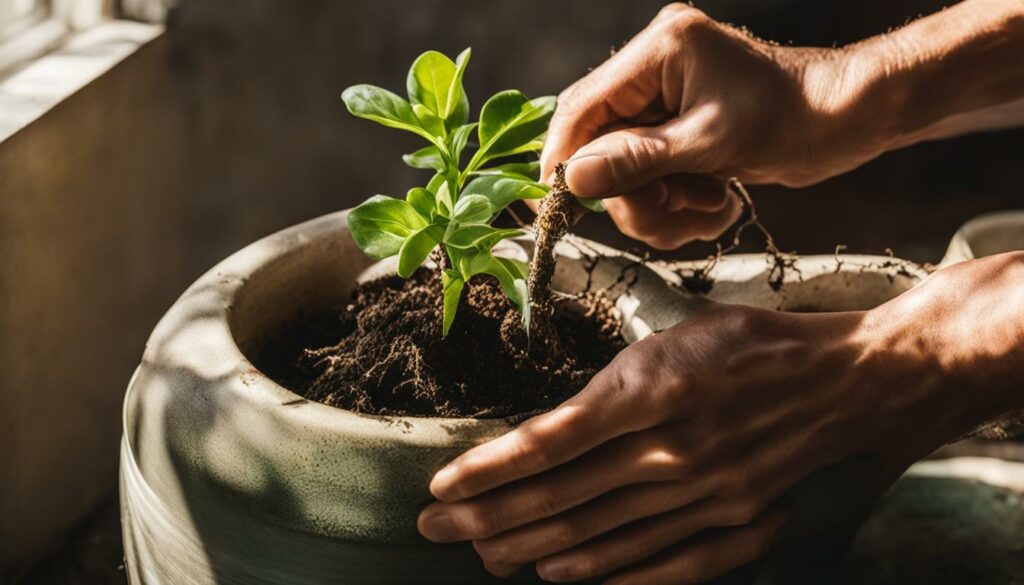
So, when is the right time to repot your houseplants? There are a few indicators to look out for. First, check if the roots are growing out of the drainage holes or circling around the pot’s edges. This is a clear sign that your plant needs a larger container. Additionally, if you notice stunted growth or frequent wilting despite adequate watering, it may be time to repot.
When repotting your indoor plants, follow these simple steps:
- Carefully remove the plant from its current pot, gently loosening the roots if they are tightly bound.
- Choose a new pot that is one size larger and has drainage holes at the bottom.
- Place a layer of fresh potting mix at the bottom of the new pot.
- Position the plant in the center of the pot and fill in the remaining space with potting mix, gently pressing it down.
- Water the plant thoroughly to settle the soil and promote root establishment.
Remember, not all plants require frequent repotting. Some prefer to be slightly rootbound and repotting them too often can cause stress. Always research the specific needs of your indoor plants to determine the ideal repotting schedule.
Cleaning and Dusting Indoor Plants
Keeping your indoor plants clean and free from dust is an essential part of plant care maintenance. Dust can accumulate on the leaves of your plants, blocking sunlight and hindering their ability to photosynthesize effectively. Regular cleaning and dusting will not only improve the appearance of your plants but also promote their overall health and well-being.
To clean your indoor plants, you have a few options. One method is to gently shower your plants with lukewarm water. This can be done in a sink, shower, or by using a spray bottle. Ensure the water pressure is not too strong as it can damage delicate leaves. Another option is to wipe the leaves with a soft damp cloth or sponge. This method is particularly useful for plants with hairy or textured leaves.
If you have larger plants or a collection of plants, using a soft brush can be an effective way to remove dust. Simply brush the leaves gently, taking care not to apply too much pressure. Remember to clean both the upper and lower surfaces of the leaves, as dust can accumulate on both sides.
“Regular cleaning and dusting will not only improve the appearance of your plants but also promote their overall health and well-being.”
It’s important to note that some plants, such as succulents and cacti, are more sensitive to water and should not be sprayed or showered. Instead, use a soft brush or cloth to clean their leaves and remove any dust.
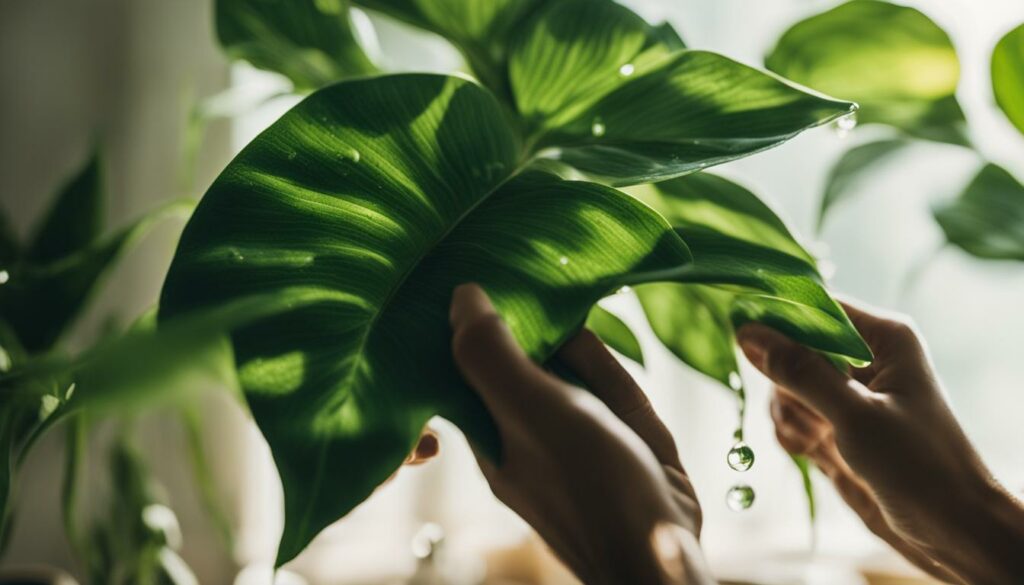
Tips for Cleaning and Dusting Indoor Plants:
- Clean your indoor plants regularly to remove dust and improve their appearance.
- Gently shower your plants with lukewarm water or wipe the leaves with a soft damp cloth.
- For larger plants, use a soft brush to remove dust from the leaves.
- Take care not to apply too much pressure or damage delicate leaves.
- Some plants, like succulents and cacti, should not be sprayed with water. Use a soft brush or cloth to clean their leaves instead.
By incorporating regular cleaning and dusting into your indoor plant care routine, you can ensure that your plants stay clean, vibrant, and healthy.
Seasonal Care for Indoor Plants
When it comes to caring for indoor plants, it’s important to adjust your routine according to the changing seasons. Each season brings unique challenges and requirements for your plants to thrive. By understanding the seasonal care needs of indoor plants, you can ensure their health and well-being throughout the year.
Spring
In spring, as the days get longer and temperatures begin to rise, your indoor plants will start to experience new growth. This is the perfect time to repot any plants that have outgrown their containers and provide them with fresh soil. Additionally, you may want to consider fertilizing your plants to support their growth during this active period.
Summer
During the summer months, indoor plants may require more frequent watering due to higher temperatures and increased evaporation. Be sure to monitor the moisture levels of your plants’ soil regularly and adjust your watering schedule accordingly. It’s also essential to provide adequate airflow and ventilation to prevent the buildup of excess humidity, which can lead to fungal diseases.
Fall
As fall approaches and daylight hours decrease, indoor plants may enter a period of dormancy. This is the time when many plants rest and conserve energy for the upcoming winter months. Reduce watering and fertilization during this time, as plants require less nutrients and moisture. It’s also a good idea to clean the leaves of your plants to remove any dust or debris that may have accumulated.
Winter
In winter, indoor plants may experience lower light levels and cooler temperatures. It’s crucial to position your plants in areas where they can receive as much natural light as possible. If necessary, supplement with artificial grow lights to ensure they get the light they need. Be cautious with watering during this season, as plants may require less water due to slower growth and reduced evaporation.
- Spring: Repot any plants that have outgrown their containers and fertilize to support growth.
- Summer: Monitor watering needs closely and provide adequate airflow to prevent excess humidity.
- Fall: Reduce watering and fertilization as plants enter a period of dormancy. Clean leaves regularly.
- Winter: Position plants for maximum light exposure and be cautious with watering.
By adapting your care routine to each season, you can ensure that your indoor plants receive the attention they need to thrive throughout the year. Remember to closely monitor your plants for any signs of stress or pests and make adjustments as necessary. With proper seasonal care, your indoor plants will continue to bring beauty and joy to your living space.

Troubleshooting Common Indoor Plant Issues
Taking care of indoor plants can sometimes come with its own set of challenges. Even with proper care and attention, plants can still encounter issues that hinder their growth and overall health. Understanding common problems and their causes is essential for troubleshooting and finding the right solutions to ensure your indoor plants thrive.
Common Indoor Plant Problems
Here are some of the most common issues that indoor plants face:
- Yellowing leaves: Yellow leaves can be a sign of various problems, including nutrient deficiencies, overwatering, underwatering, or pest infestations.
- Wilting: Wilting is often caused by underwatering or overwatering. It can also indicate root rot or pest infestation.
- Lack of growth: If your plant shows no signs of growth or seems stunted, it may be due to insufficient light, improper fertilization, or root-bound conditions.
- Leaf spots: Leaf spots can be caused by fungal or bacterial infections, as well as nutrient imbalances. They typically appear as dark or discolored spots on the leaves.
Identifying the specific problem your indoor plant is facing is the first step in addressing the issue and implementing the appropriate solution.
Troubleshooting and Solving Issues with Houseplants
When troubleshooting indoor plant issues, it’s important to consider the following factors:
- Examine the plant’s environment: Assess the lighting conditions, temperature, humidity, and air circulation around the plant to ensure they are suitable for its specific needs.
- Review your watering routine: Evaluate your watering habits and adjust accordingly. Avoid overwatering or underwatering, and ensure proper drainage to prevent root rot.
- Check for pests: Inspect your plants for common pests like aphids, spider mites, or fungus gnats. If detected, take appropriate measures to eliminate the pests and prevent further infestations.
- Assess nutrient levels: Nutrient deficiencies or imbalances can affect plant health. Consider adjusting your fertilization routine or providing additional nutrients through organic or synthetic fertilizers.
- Prune and groom: Regularly prune your indoor plants to remove dead or damaged parts and encourage new growth. Grooming also helps improve air circulation and reduce the risk of pest infestations.
If your indoor plant issues persist despite your best efforts, consider seeking advice from a local gardening expert or a specialized plant care community. They can provide personalized guidance and recommendations based on your specific plant species and circumstances.
| Issue | Cause | Solution |
|---|---|---|
| Yellowing leaves | Nutrient deficiencies, overwatering, underwatering, or pest infestations | Adjust watering routine, ensure proper drainage, check for pests, and assess nutrient levels |
| Wilting | Underwatering, overwatering, root rot, or pest infestation | Properly water the plant, address root rot if present, and check for pests |
| Lack of growth | Insufficient light, improper fertilization, or root-bound conditions | Provide adequate light, adjust fertilization routine, and consider repotting if root-bound |
| Leaf spots | Fungal or bacterial infections, nutrient imbalances | Treat with appropriate fungicides or bactericides, adjust fertilization routine |
By troubleshooting and solving common indoor plant issues, you can provide your plants with the care they need to thrive and beautify your indoor space.
Conclusion
Caring for indoor plants can be a fulfilling and rewarding experience. With the right knowledge and techniques, beginners can successfully care for their indoor plants and create a thriving indoor garden. By following the tips and tricks outlined in this comprehensive guide, you can ensure the health and vitality of your plants.
Remember to consider the specific needs of each plant, such as their watering requirements, light preferences, and temperature tolerance. Adapting your care routine to the changing seasons is also crucial for supporting optimal growth. Monitoring your plants closely for any signs of pests or diseases is essential to nip potential problems in the bud.
In summary, this guide has provided a comprehensive overview of indoor plant care for beginners. By following these tips, you can create a beautiful and vibrant indoor garden that brings nature into your home or workspace. Take the time to understand your plants’ needs, provide them with the right conditions, and enjoy the benefits of greenery all year round.
FAQ
Why should I care for indoor plants?
Indoor plants offer numerous benefits, including improving air quality, boosting mood and productivity, reducing stress, and adding a touch of nature to our surroundings.
What tools and supplies do I need for indoor plant care?
Essential tools and supplies for indoor plant care include watering cans, spray bottles, potting mix, fertilizers, pruning shears, and plant stands.
How often should I water my indoor plants?
The watering needs of indoor plants vary depending on factors like plant type, pot size, humidity levels, and seasonality. It’s important to avoid overwatering or underwatering by considering these factors when determining watering frequency.
What type of soil is best for indoor plants?
Indoor plants thrive in well-draining soil that provides the necessary nutrients for growth. A soil-less mix consisting of peat moss, vermiculite/perlite, and compost is ideal for most houseplants.
How do I provide adequate light for my indoor plants?
Different indoor plants have varying light requirements. Understanding the light needs of your specific plants will help you provide the right amount of light, ranging from high light to low light conditions.
How do I fertilize my indoor plants?
Indoor plants require additional nutrients to support their growth. Choosing the right fertilizer and following a proper fertilization schedule will provide essential elements like nitrogen, phosphorus, and potassium for healthy and vibrant indoor plants.
What temperature and humidity levels are ideal for indoor plants?
Most indoor plants prefer temperatures above 55°F and can tolerate average room humidity levels. Maintaining proper climate conditions within this range will ensure the well-being of your indoor plants.
How do I prune and groom my indoor plants?
Regular pruning and grooming are essential for maintaining the appearance and health of indoor plants. Pruning helps control growth, remove damaged or diseased parts, and encourage bushier and more compact growth.
How do I deal with pests and diseases in my indoor plants?
Indoor plants can be susceptible to pests like aphids, spider mites, and fungus gnats, as well as diseases like powdery mildew and leaf spots. Proper pest management and preventive measures are crucial for keeping your indoor plants healthy.
How can I propagate indoor plants?
Propagating indoor plants allows you to create new plants from existing ones. Methods like division, stem cuttings, and leaf cuttings can be used to propagate a variety of houseplants.
When and how should I repot my indoor plants?
Indoor plants may outgrow their containers and require repotting. This involves transferring the plant to a larger pot with fresh soil to allow for root growth and continued thriving. Knowing when and how to repot your indoor plants is important for their well-being.
How do I clean and dust my indoor plants?
Regular cleaning and dusting of indoor plants is necessary to maintain their health and appearance. Dust can accumulate on leaves and hinder photosynthesis. Cleaning methods such as gentle showers, wiping with a cloth, or using a soft brush can help keep your plants clean and vibrant.
What care do indoor plants need throughout the seasons?
Indoor plants may have different care needs depending on the season. Adapting your care routine to factors like temperature, humidity, and light availability will ensure the well-being of your indoor plants throughout the year.
What should I do if my indoor plants are experiencing issues?
Despite proper care, indoor plants may face issues like yellowing leaves, wilting, or lack of growth. Understanding common problems and their causes will help you troubleshoot and rectify issues to ensure your indoor plants stay healthy.
